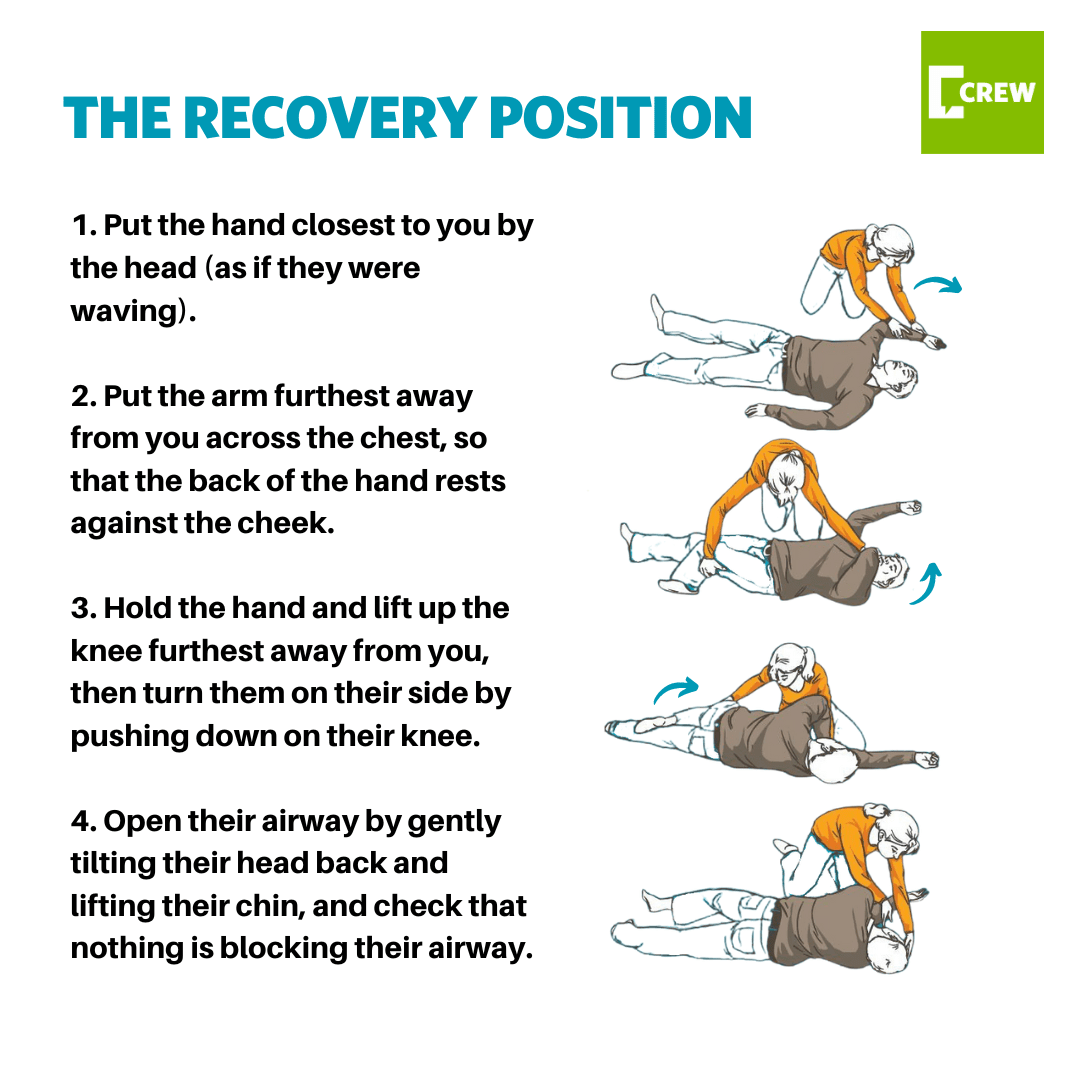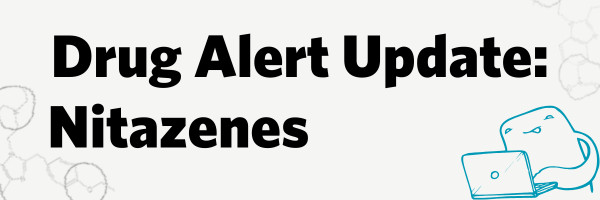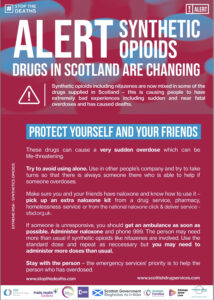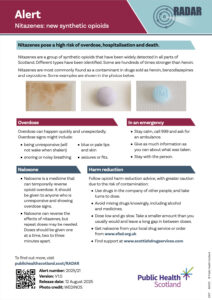Reading time: 5 minutes
What are Nitazenes?
Synthetic opioid drugs such as ‘nitazenes’ have been detected in the Scottish and UK drug supply. There are many types of nitazenes including metonitazene, N-pyrrolidino-etonitazene (NPE), etonitazepyne, etonitazene, isotonitazene and protonitazene. Some are hundreds of times stronger than heroin. Most often they may be sold as or found in other drugs.
They have been found been found in powders (brown/yellow/white), contaminated heroin and pills/tablets sold as oxycontin, as well as Diazepam (a benzodiazepine) and liquids, including nasal sprays. There is also a concern that nitazenes could be found in other drugs, such as cocaine, due to accidental cross contamination. We also know that nitazenes have been involved in some drug overdoses and deaths in the UK and Ireland.
Drug Alerts
Drug-related harms, including sudden collapse, hospitalisation, and sadly in some cases, drug-related deaths, have increased across Scotland.
This seems consistent with a national picture of increased harms over the past 7 months, linked with nitazines, found in various drugs, including those sold as heroin, benzodiazepines and oxycontin among other drugs.
Naloxone is a life-saving medicine that temporarily reverses the effects of an opiate/opioid overdose.
What you need to know
- The effects are similar to other opioid drugs such as morphine and heroin but the effects will be felt more strongly from much smaller amounts
- Nitazenes can vary in potency. Some are thought to be over 600 times more potent than heroin meaning that a fatal dose could be as small as two grains of sand
- The effects may be short-lasting with a strong urge to re-dose
- The amount of nitazene type drugs found in tablets, pills and powders varies so it would be almost impossible to judge an accurate dose
- Opioid drugs can cause your breathing and heart-rate to slow to life threatening and fatal levels
- Higher doses of opioid drugs increase this risk of overdose
- This risk is increased if mixing with any other drug, particularly any ‘downer’ type drugs such as alcohol, other opioids, benzodiazepines (e.g. vallies, Xanax), GHB and ketamine
- If you have been taking nitazenes and stop suddenly you may experience opioid withdrawal symptoms
Harm reduction
- Test your drugs – this allows you to be more aware of unexpected contents. Visit www.crew.scot/how-do-i-test-my-drugs for more information on how you can test your drugs
- Remember that contents can vary even with in the same batch
- Start with a test dose
- Familiarise yourself with the signs of an opioid overdose so that you feel confident about what to do to help.
- Overdoses involving nitazenes can be reversed using the life-saving medicine naloxone hydrochloride
- You may need to administer multiple small doses of injectable naloxone before the overdose will be reversed
- Doses should be administered one at a time, waiting 2-3 minutes between each dose
- Prenoxad (intramuscular) and Nyxoid (intranasal) are two medical products containing naloxone hydrochloride
- In Scotland the provision of naloxone is FREE and anyone 16 or over can grab a naloxone kit from the Crew Drop-in or visit www.crew.scot/what-we-do/get-naloxone
There are also new resources available from Scottish Drugs Forum (SDF) and an alert from RADAR. Full information on the current nitazene alert and for a list of resources, please visit the ‘Rapid Action Drug Alerts and Response (RADAR) Alert: Nitazenes‘ page.
Download our leaflet about nitazenes: What are nitazenes
In an Emergency
- In an emergency call 999 for an ambulance first saying you suspect an overdose – the call handler will tell you what to doWhen to give naloxone:
- Naloxone should be given to anyone who is non-responsive and displaying the signs of an overdose
- If you are unsure if the person has taken opioids, always use naloxone as this will not cause any harm and could save their life
- If someone has been taking opioid drugs and other ‘downer’ drugs such as alcohol or benzos (e.g. vallies or Xanax) then naloxone will not reverse the effects of these drugs. You should still administer naloxone as this will reverse the effects of the opioids and allow the person’s body the chance to respond to the ‘downer’ effects of any other drugs and could save their life!
- If someone has taken drugs contaminated with nitazines, they may need multiple, repeated, measured doses of injectable naloxone at 2-3 minute intervals to bring them round – avoid administering the entire syringe’s content at once.
Signs of an opioid overdose include:
- Unconsciousness – won’t wake with a shout or a shake
- Severe nausea and vomiting
- Seizures/fitting
- Difficulty breathing/snoring/raspy breathing
- Blue/pale tingeing of knees, hands and lips
- Slow or erratic pulse (heartbeat)
- Pale, cold and clammy skin for people with white skin: ashy-grey, cold and clammy skin for people who have black or brown skin
- Pin-point pupils

- Always call 999 in an emergency
- Put the person into the recovery position if possible (as shown on the previous graphic)
- IM (intramuscular) naloxone should be administered into the muscle at the top of the thigh
- It can also be administered into the top part of the arm between the elbow and shoulder where vaccines are usually administered
- If someone has not responded to the first dose of IM naloxone administered into their thigh then a second dose could be administered into the top of their arm to increase the effectiveness of the medicine.
- Remember that you can administer up to 5 doses per injecting naloxone (Prenoxad) kit, and 1 per nasal naloxone (Nyxoid) kit
- If the person stops breathing perform CPR (chest compressions and rescue breaths) where possible.
- Naloxone does not affect breastfeeding so this should not discourage you from administering it
- The aim of naloxone is to save a life so if a pregnant person is overdosing and at risk of death, naloxone should be administered
- Take extra care when inserting the needle if the person has low body fat/muscle mass
- The person may vomit, be disorientated, dizzy, nauseous, anxious or be aggressive when they wake up
- The effects of naloxone can wear off after 20-30 minutes so ensure you stay with the person in case they go back into overdose
- Naloxone at Crew
- Postal naloxone
- Naloxone training
- Info on getting help in Edinburgh with Drugs
- Free App listing free support groups in Edinburgh
- WEDINOS
- How to test your drugs
- Drug emergencies
- RADAR: Scotland’s drugs early warning system
- Resources- Stop The Deaths
- Support for people who have provided CPR





